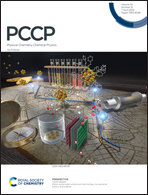A physics-inspired neural network to solve partial differential equations – application in diffusion-induced stress
Abstract
Analyzing and predicting diffusion-induced stress are of paramount importance in understanding the structural durability of lithium- and sodium-ion batteries, which generally require solving initial-boundary value problems, involving partial differential equations (PDEs) for mechanical equilibrium and mass transport. Due to the complexity and nonlinear characteristics of the initial-boundary value problems, numerical methods, such as finite difference, finite element, spectral analysis, and so forth, have been used. In this work, we propose two whole loss functions as the sum of the residuals of the PDEs, initial conditions and boundary conditions for the problems with decoupling and coupling between diffusion and stress, respectively, and apply a physics-inspired neural network under the framework of DeepXDE to solve diffusion-induced stress in an elastic sphere in contrast to traditional numerical methods. Using time-space coordinates as inputs and displacement and the solute concentration as outputs of artificial neural networks, we solve the spatiotemporal evolution of the displacement and the solute concentration in the elastic sphere for both the decoupling and coupling problems. The numerical results from the physics-inspired neural network are validated by analytical solutions and a finite element simulation using the COMSOL package. The method developed in this work opens an approach to analyze the stress evolution in electrodes due to electrochemical cycling.



 Please wait while we load your content...
Please wait while we load your content...